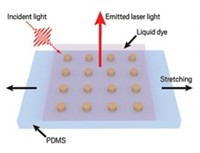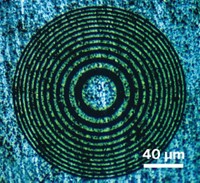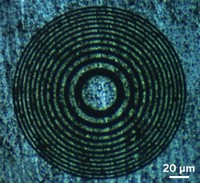Advertisement
Grab your lab coat. Let's get started
Welcome!
Welcome!
Create an account below to get 6 C&EN articles per month, receive newsletters and more - all free.
It seems this is your first time logging in online. Please enter the following information to continue.
As an ACS member you automatically get access to this site. All we need is few more details to create your reading experience.
Not you? Sign in with a different account.
Not you? Sign in with a different account.
ERROR 1
ERROR 1
ERROR 2
ERROR 2
ERROR 2
ERROR 2
ERROR 2
Password and Confirm password must match.
If you have an ACS member number, please enter it here so we can link this account to your membership. (optional)
ERROR 2
ACS values your privacy. By submitting your information, you are gaining access to C&EN and subscribing to our weekly newsletter. We use the information you provide to make your reading experience better, and we will never sell your data to third party members.
Materials
Metamaterials Bend Light To New Levels
August 18, 2008
| A version of this story appeared in
Volume 86, Issue 33

Two breakthrough developments in the fabrication of metamaterials are reported in a pair of research papers by Xiang Zhang and coworkers at the University of California, Berkeley. Metamaterials are composites designed to have a negative index of refraction, which imparts the extraordinary capability to bend light away from or around an object made from or coated with the material. These composites could lead to lenses that permit optical imaging at the molecular level, nanocircuits for more powerful computers, and, to the thrill of science-fiction lovers, cloaking devices that render objects invisible to the human eye. In one study, Zhang and coworkers alternated thin layers of silver and magnesium fluoride on a substrate, then cut nanoscale “fishnet” patterns into the layers (Nature, DOI: 10.1038/nature07247). The composite, which has a negative refractive index in near-infrared light, is the first three-dimensional metamaterial in the optical region; in the past, metamaterials have been limited to thin layers or longer wavelength microwaves. In a second study, the team built a metamaterial from silver nanowires electrochemically deposited in porous aluminum oxide (Science 2008, 321, 930). This composite exhibits negative refraction down to 660 nm, the first example of a bulk metamaterial in the visible region.





Join the conversation
Contact the reporter
Submit a Letter to the Editor for publication
Engage with us on Twitter